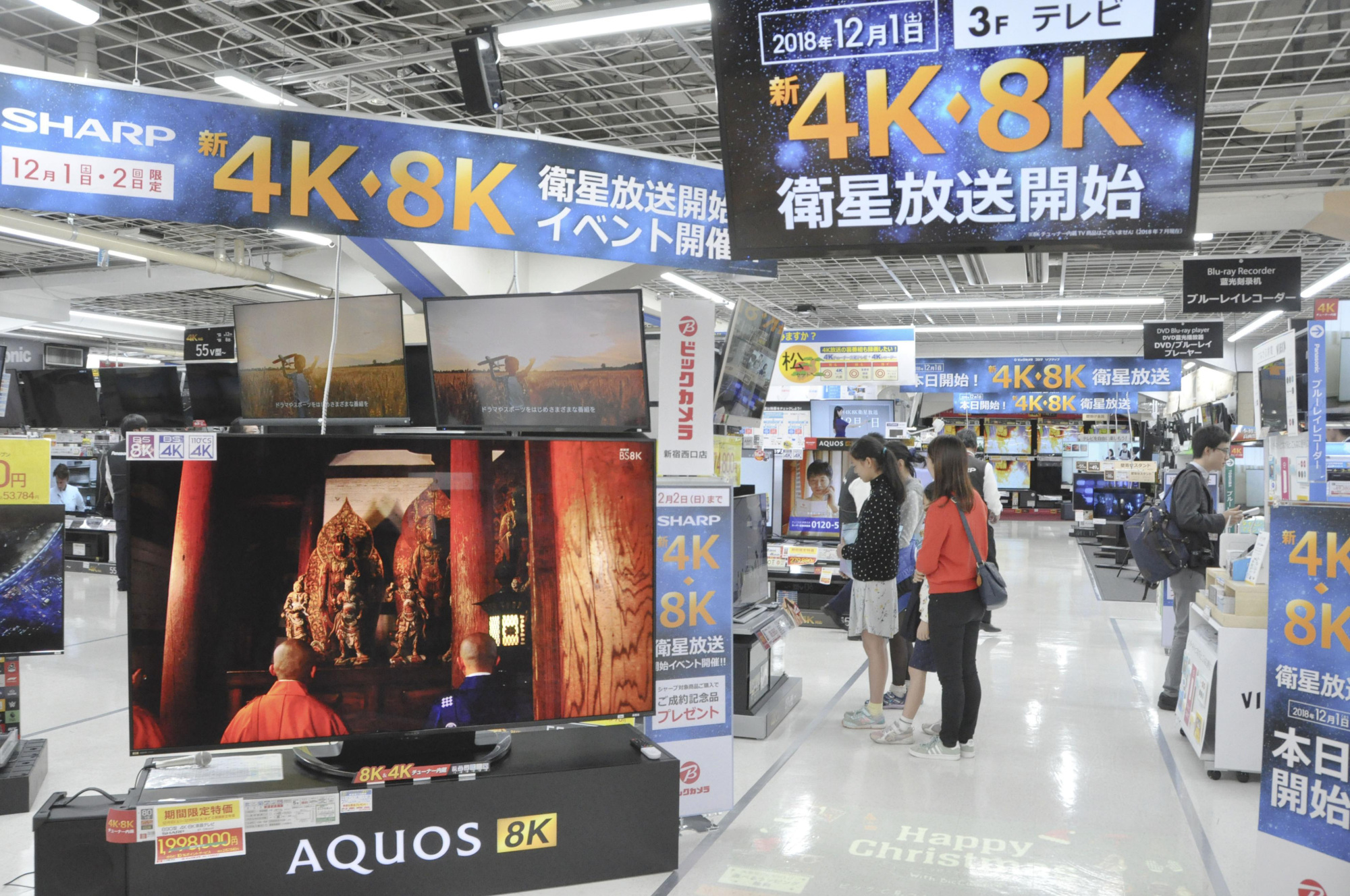One of the consumer items that enjoyed a bump in sales prior to this month's sales tax hike was TV sets, specifically those that feature 4K and 8K displays. In many cases, it simply appears the timing was right. Many households hadn't bought new televisions since the introduction of digital terrestrial broadcasts in 2011, but there's also next year's Tokyo Olympics to look forward to in glistening ultrahigh definition.
Nevertheless, there is still some confusion over the difference between 4K and 8K displays. Obviously, 8K picture quality is better and so is the sound, but why are 8K displays being pushed onto the market when 4K displays were introduced so recently? Several weeks ago, I was at NHK to talk to an executive about the public broadcaster's upcoming promotion of 8K technology at an industry convention in Europe. NHK is the only broadcaster in the world right now with a fully dedicated 8K broadcast channel, since the technology was chiefly developed by the public broadcaster. TVs with 4K displays were developed by a number of international players.
The Olympics certainly had a role in prodding NHK to get 8K out there as soon as possible, but the public broadcaster, which also has a 4K channel, wants to stay ahead of the curve. All the major commercial TV companies in Japan launched satellite 4K channels last year, but only NHK has an 8K channel. Apparently, commercial stations need to improve their 4K technology before they move on to 8K, and they're having a difficult time of it.



